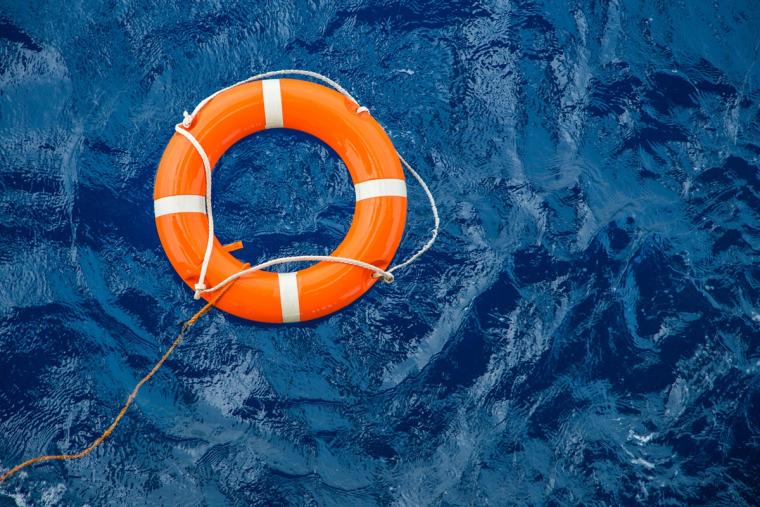
Thanks to an early-season heatwave, swimming pools, beaches and other bodies of water are more crowded than usual, which adds urgency to new drowning data recently released by the U.S. Centers for Disease Control.
Unintentional drowning death rates in the United States were higher in 2020 (4,589), 2021 (4,677) and 2022 (4,509) than in 2019 (4,067), according to the report.
As CNN.com noted: “Each year, on average, about 4,000 Americans died from accidental drowning, a number that changed little from 2011 to 2020. But that number has been about 10% higher the past few years, adding 500 to 600 more deaths each year to the annual tally. It’s the first uptick in drowning rates in the U.S. for at least two decades.”
Adam Katchmarchi, chief executive officer of the National Drowning Prevention Alliance (NDPA), called the findings “shocking, to say the least.”
“The increases in drowning deaths coinciding with the COVID-19 pandemic and new national estimates of self-reported swimming skill, swimming lesson participation and recreational water exposure highlight the need to increase access to effective drowning prevention strategies such as basic swimming and water safety skills training to reduce drowning risk,” the CDC report’s authors wrote.
Indeed, an estimated 40 million adults have claimed they don’t know how to swim, and more than half of all adults have never taken a swimming lesson, according to the CDC. Women were more likely than men to admit they don’t know how to swim (19.4% vs. 11.2%), as were adults 65 and older compared to those between the ages of 18 and 29 (18.6% vs. 12.4%).
More than one in three (36.8%) Black adults reported they do not know how to swim compared to 15% of all adults. Additionally, two in three Black adults (63%) and three in four Hispanic adults (72%) reported never taking a swimming lesson. Research suggests the difference in self-reported swimming ability may be linked to differences in access to swimming lessons or other historical and social factors. For example, swimming lessons may be too expensive or not available in some communities; some may fear water, while others may feel uncomfortable wearing traditional swimwear.
“When I just look at the overall numbers, with over 4,000 people dying — that’s over 12 people a day — that’s really one person every two hours. And those are lives, not numbers,” Dr. Debra Houry, chief medical officer for the CDC, told CNN.com. “I think we forget drowning is still a really big problem for our young kids and that we can do something about it by making sure kids know how to swim.”
The CDC works with the YMCA, the American Red Cross and other organizations to support basic swimming and water safety skills training at the community level to help provide equitable access.
Houry recommends swimming lessons begin between the ages of 1 and 4, as drowning is the leading cause of death for children in the United States in that age range. But “if you are an adult and you don’t know how to swim, it’s never too late to get that swim lesson. It’s really important,” she told CNN.
COVID-19 wreaked havoc on swimming lessons and water safety programs, experts say.
“We know that many public pools closed during the COVID-19 pandemic, which limited the availability of swimming lessons,” Tessa Clemens, lead author of the new CDC report, told NPR.org. “Once pools reopened, many facilities faced shortages of trained swimming instructors and lifeguards, which further reduced availability of swimming lessons and safe swimming areas.”
 “Basically the faucet was turned off,” added Bill Ramos, an associate professor at the Indiana University School of Public Health. “Lifeguards were not being trained. Children were not being taught swim lessons.”
“Basically the faucet was turned off,” added Bill Ramos, an associate professor at the Indiana University School of Public Health. “Lifeguards were not being trained. Children were not being taught swim lessons.”
The CDC’s drowning experts collected the latest drowning data to better understand the barriers people face to accessing basic swimming and water safety skills training. “[Doing so] can help us better understand how to address those barriers, decrease drowning rates and save lives,” Houry said in CDC statement.
The CDC offers policymakers, public health professionals and community leaders suggestions for developing inclusive programs that can help reverse current drowning trends. They include:
• Building and revitalizing public pools to increase access to swimming for all people. All public pools should also be made accessible for people with disabilities.
• Promoting affordable swimming and water safety lessons through participating partners such as the American Red Cross, YMCA and other community-based organizations.
• Swimming and water safety skills training professionals reaching out to communities to better understand what barriers people face to participate in lessons, then building partnerships to connect with and engage people with a high risk of drowning.
• Hiring diverse aquatic staff members that look like the communities they serve and adapting aquatic programs to meet specific community needs in order to decrease barriers.
“Hopefully this is a wake-up call to the country on a number of fronts,” the NDPA’s Katchmarchi told NPR.org. “I think most people don’t recognize sometimes the complexity of the drowning problem in the United States, but also that it is 100% preventable and it doesn’t have to be this way.”

